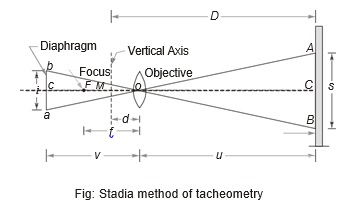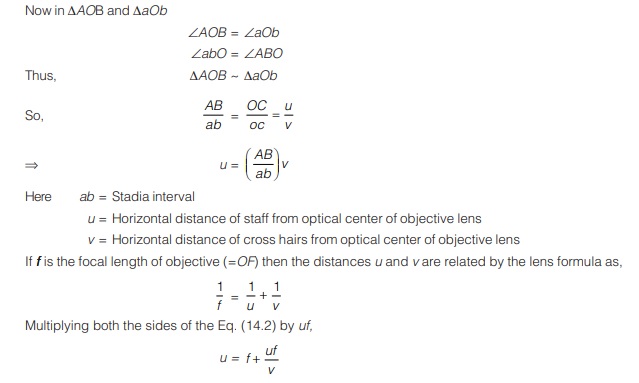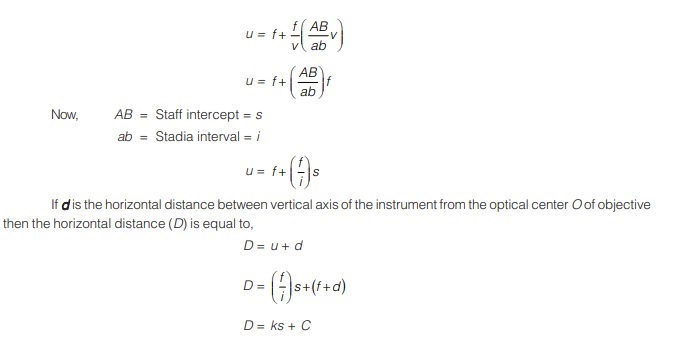PRINCIPLE OF STADIA METHOD OF TACHEOMETRY
As shown in figure, let there be an external focusing telescope with horizontal axis. Also the staff is held vertical at station Q.

Let staff intercept = AB = s
Thus light rays coming from A and B i.e. the rays AO and BO meet at objective center O. This objective forms an inverted image ba of AB.


This is known as tacheometric distance equation.
where the constant (k) is (f/i) which is called as multiplying constant and the constant (C) is (f + d) which is called as additive constant.
- Usually the value of multiplying constant (k) is 100 and additive constant (C) is kept to the minimum usually equal to zero. The value of C varies from 0.3 m to 0.6 m in external focusing telescope and 0.08 m to 0.2 m in internal focusing telescope.
- If an anaclitic lens is used into the telescope, it is so placed that all the observations are reduced to the centre of instrument and the constant C becomes zero. Thus the tacheometric distance equation is D = kS.
- RL of staff station Q: Since the line of sight is assumed to be horizontal and thus the elevation of staff station Q is given by,
Elevation of staff station Q = Elevation of line of collimation – Central hair reading (CQ)
= (RL of BM + BS) – Central hair reading (CQ)
<< Previous | Next >>
Must Read: What is Surveying?

